Designing a Workshop to Address Cross-Cultural Differences
VerifiedAdded on 2023/04/21
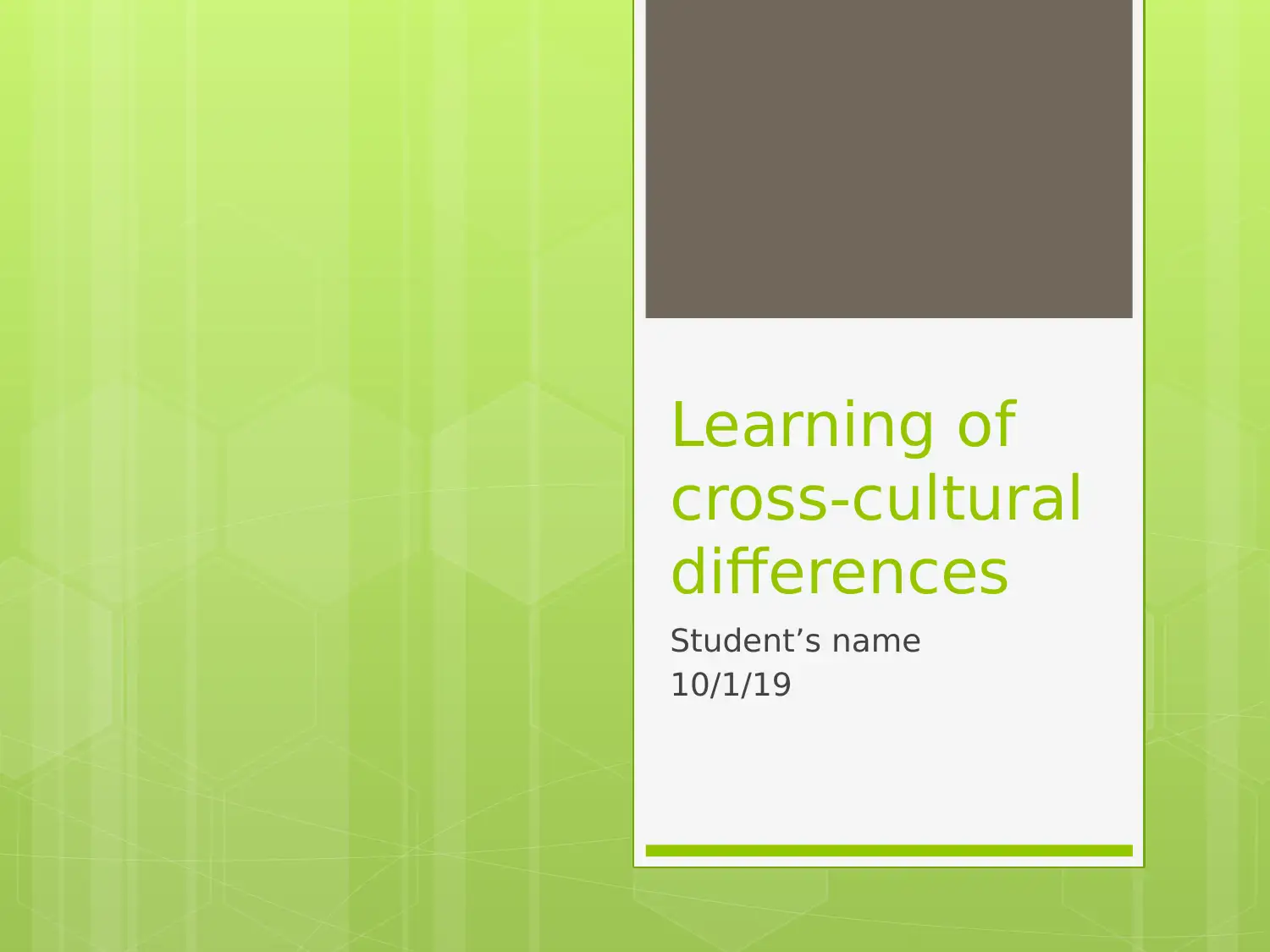
cross-cultural
differences
Student’s name
10/1/19
Paraphrase This Document
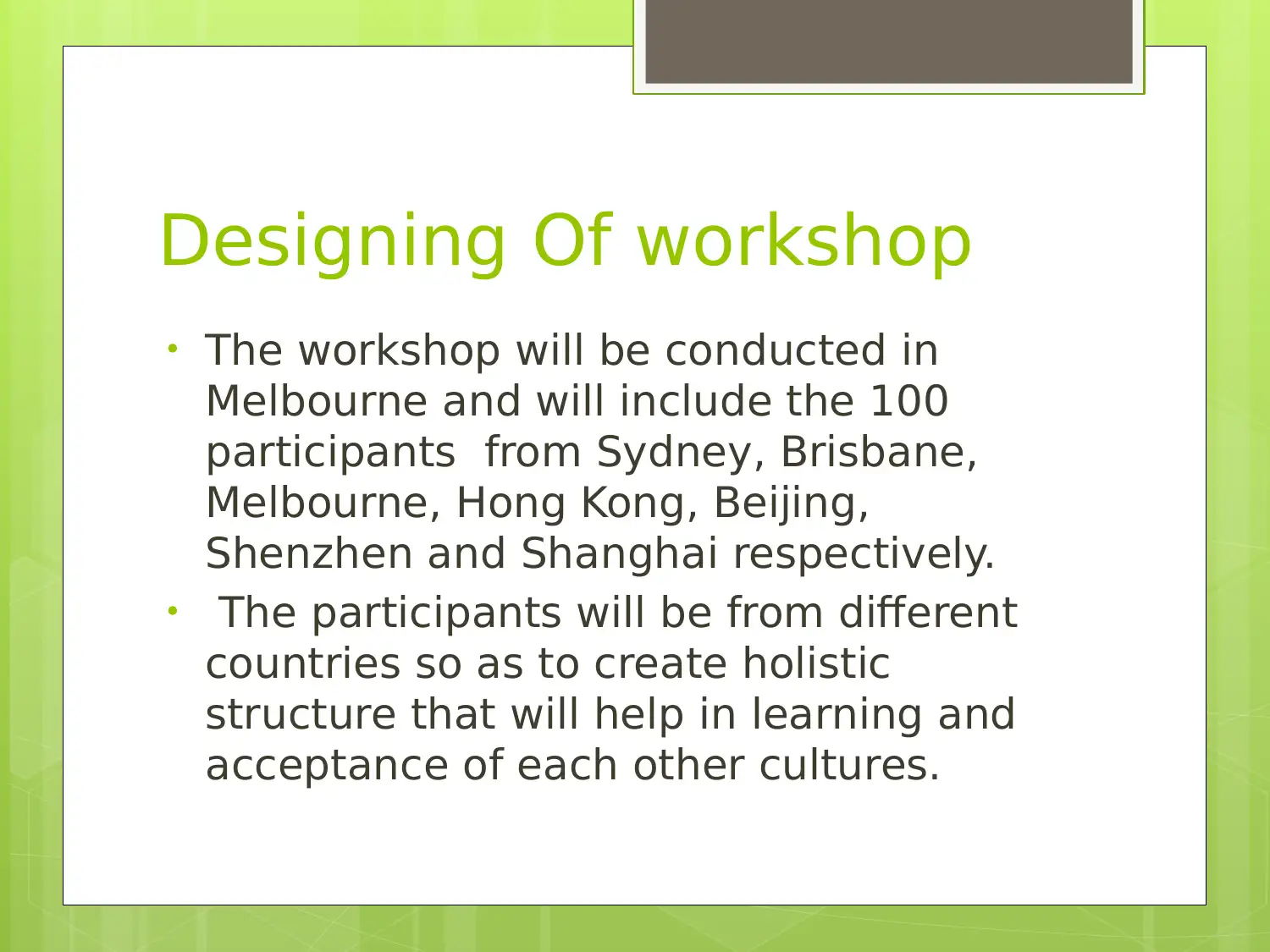
• The workshop will be conducted in
Melbourne and will include the 100
participants from Sydney, Brisbane,
Melbourne, Hong Kong, Beijing,
Shenzhen and Shanghai respectively.
• The participants will be from different
countries so as to create holistic
structure that will help in learning and
acceptance of each other cultures.
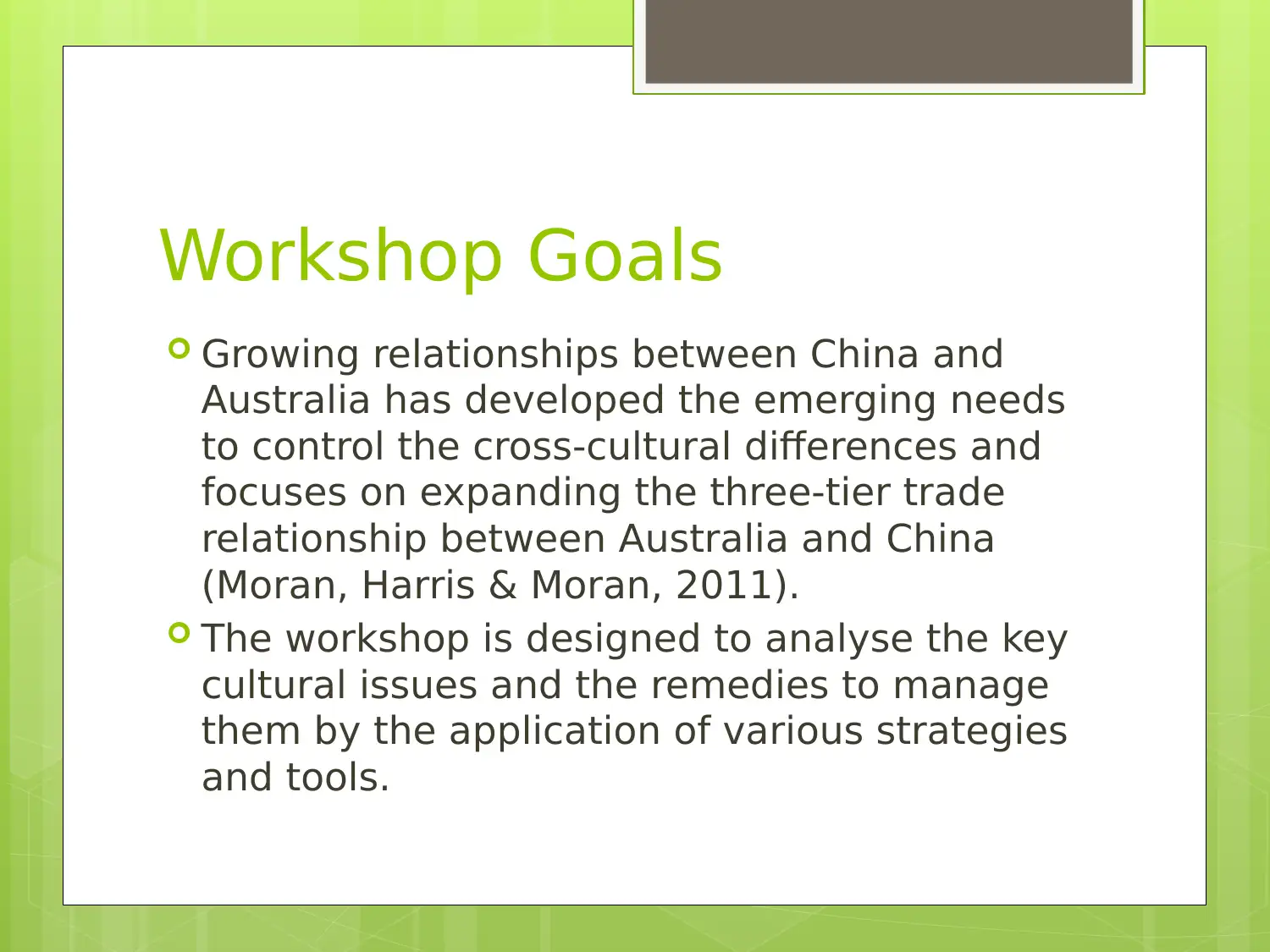
Growing relationships between China and
Australia has developed the emerging needs
to control the cross-cultural differences and
focuses on expanding the three-tier trade
relationship between Australia and China
(Moran, Harris & Moran, 2011).
The workshop is designed to analyse the key
cultural issues and the remedies to manage
them by the application of various strategies
and tools.
⊘ This is a preview!⊘
Do you want full access?
Subscribe today to unlock all pages.

Trusted by 1+ million students worldwide

Paraphrase This Document

It is analysed that in the earlier years
China has various restrictions n the
import and the exports of the goods.
Now the country has remove its
restrictions and focuses on expanding
the three tier trade relations between
Australia and China(Dikotter,2015).
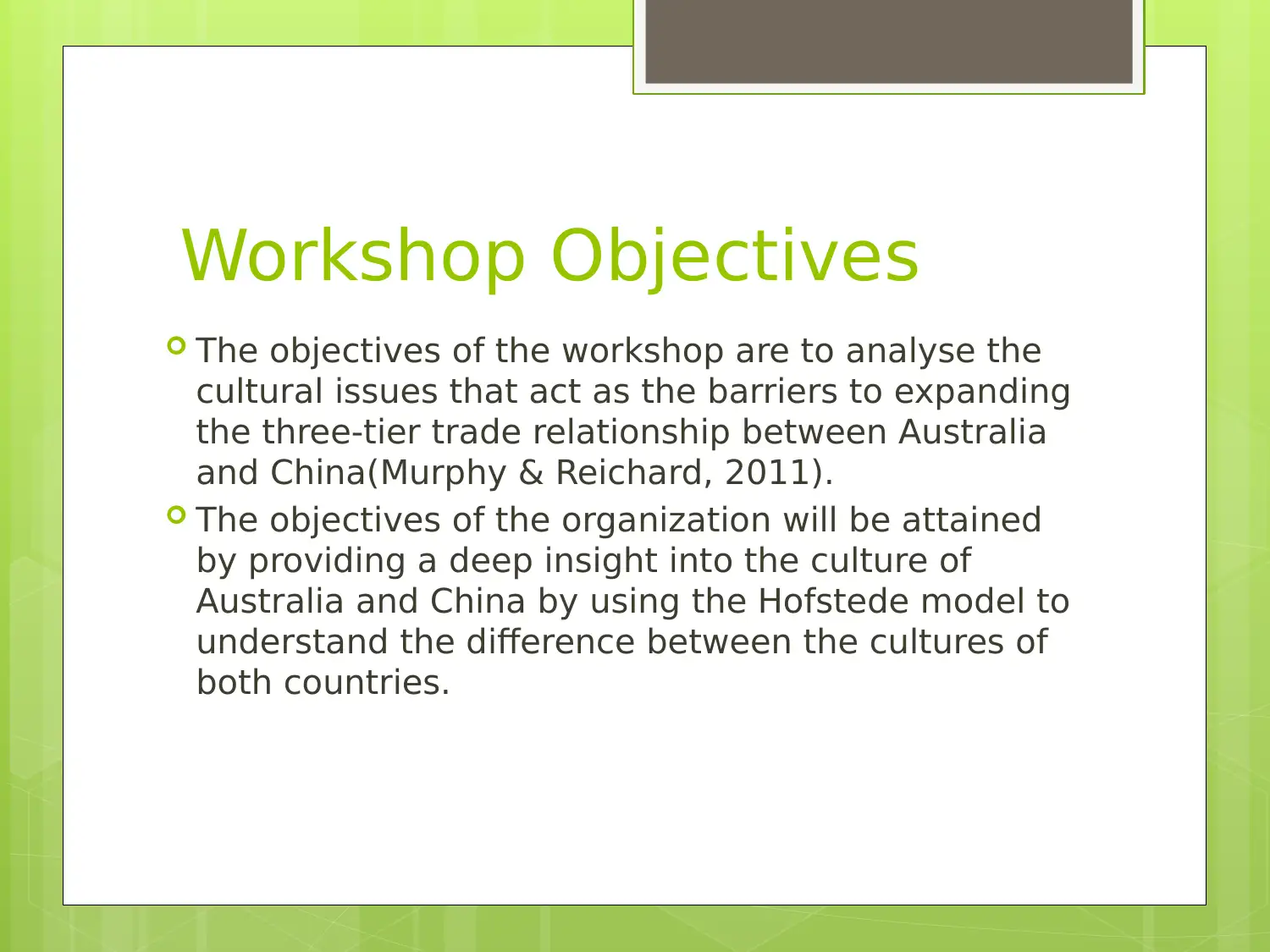
The objectives of the workshop are to analyse the
cultural issues that act as the barriers to expanding
the three-tier trade relationship between Australia
and China(Murphy & Reichard, 2011).
The objectives of the organization will be attained
by providing a deep insight into the culture of
Australia and China by using the Hofstede model to
understand the difference between the cultures of
both countries.
⊘ This is a preview!⊘
Do you want full access?
Subscribe today to unlock all pages.

Trusted by 1+ million students worldwide
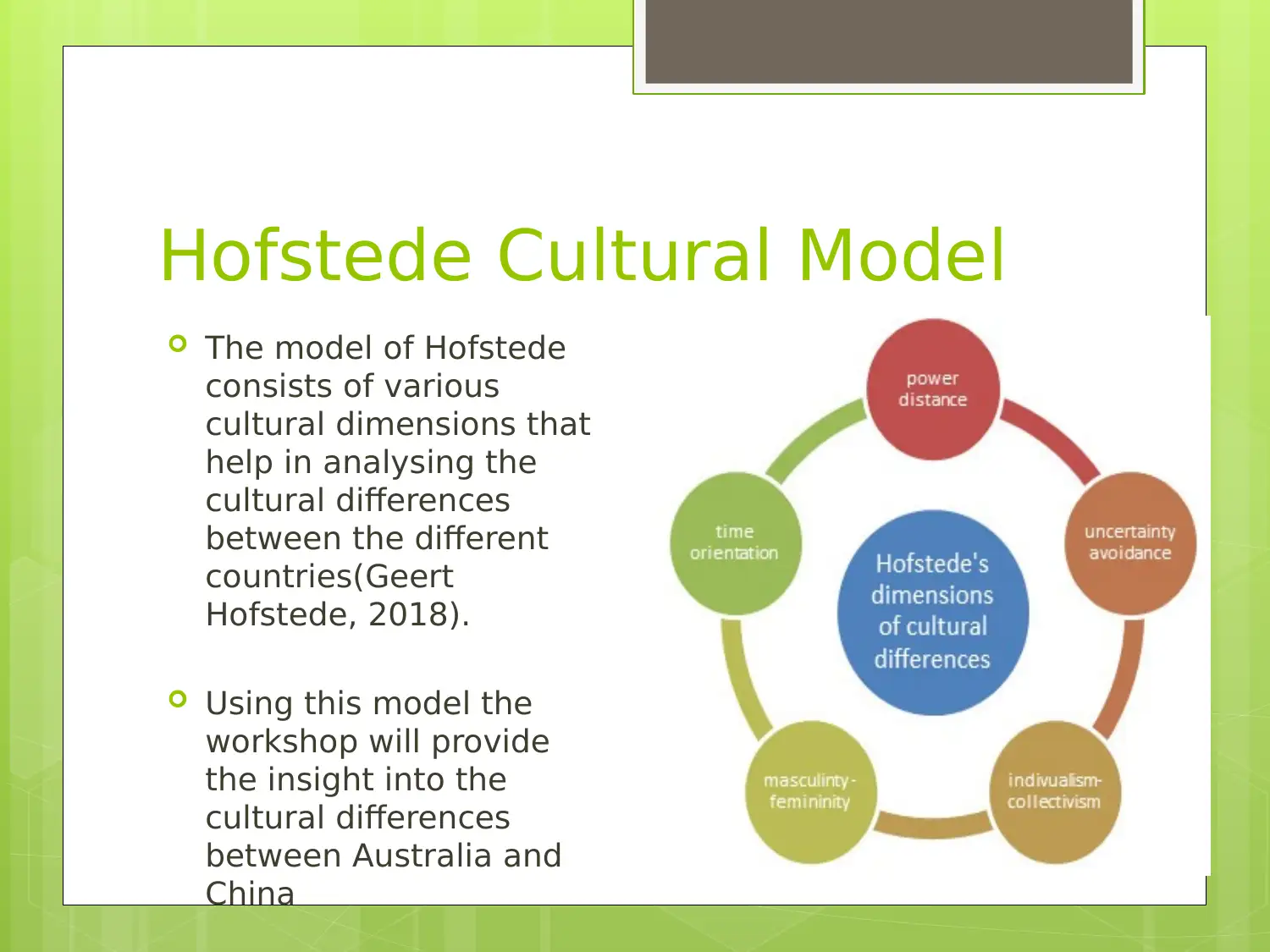
The model of Hofstede
consists of various
cultural dimensions that
help in analysing the
cultural differences
between the different
countries(Geert
Hofstede, 2018).
Using this model the
workshop will provide
the insight into the
cultural differences
between Australia and
China
Paraphrase This Document
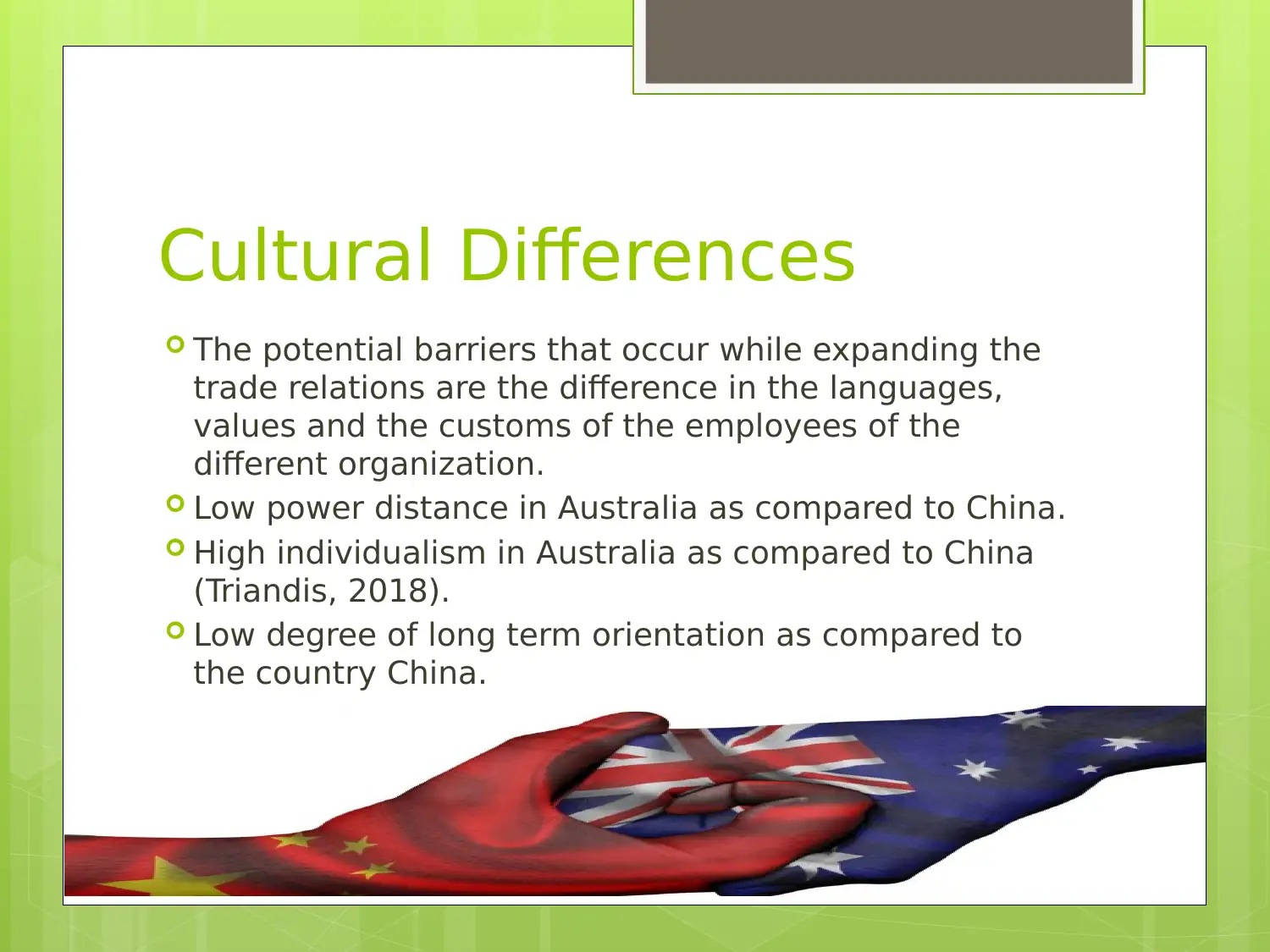
The potential barriers that occur while expanding the
trade relations are the difference in the languages,
values and the customs of the employees of the
different organization.
Low power distance in Australia as compared to China.
High individualism in Australia as compared to China
(Triandis, 2018).
Low degree of long term orientation as compared to
the country China.
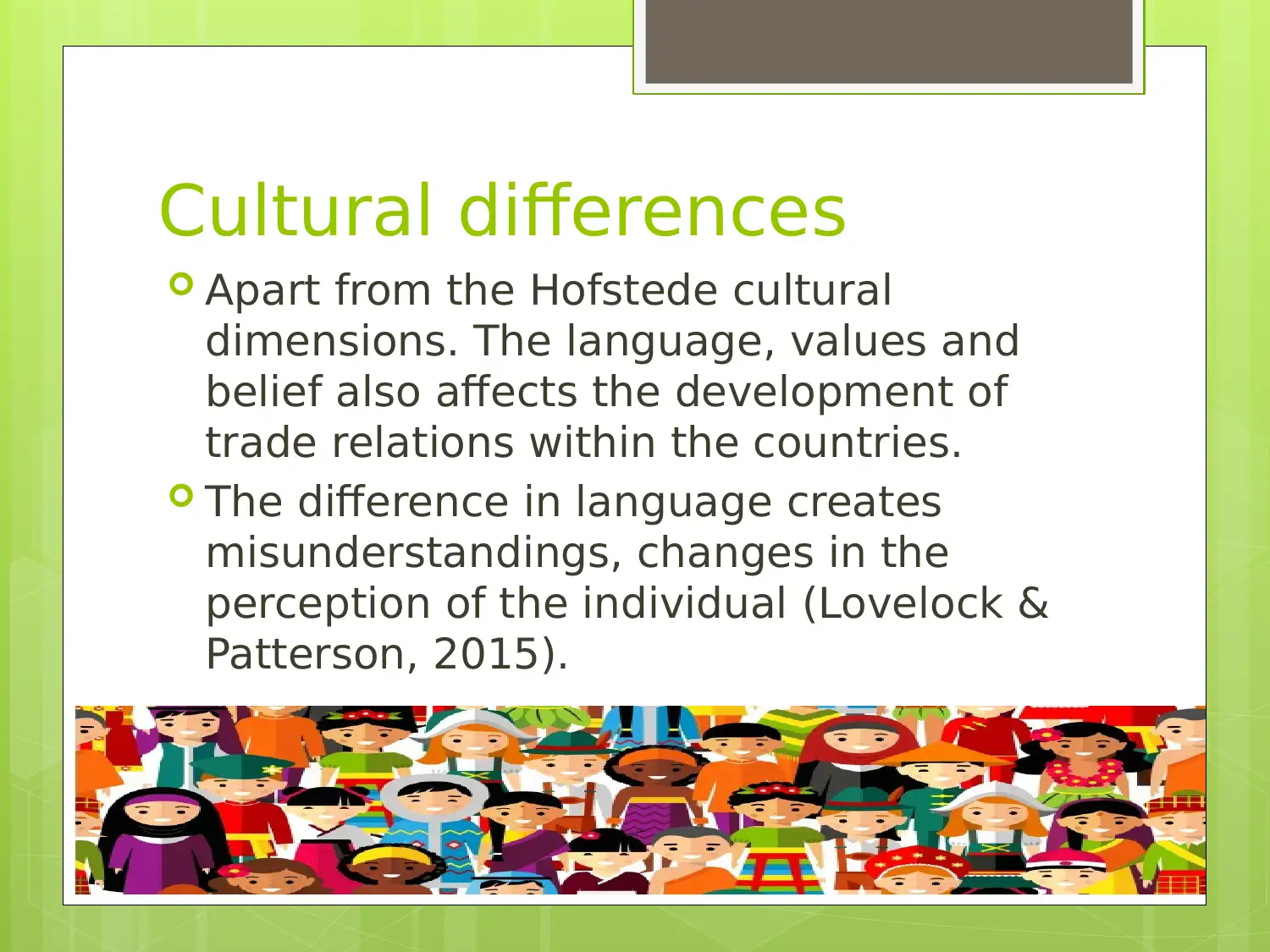
Apart from the Hofstede cultural
dimensions. The language, values and
belief also affects the development of
trade relations within the countries.
The difference in language creates
misunderstandings, changes in the
perception of the individual (Lovelock &
Patterson, 2015).
⊘ This is a preview!⊘
Do you want full access?
Subscribe today to unlock all pages.

Trusted by 1+ million students worldwide
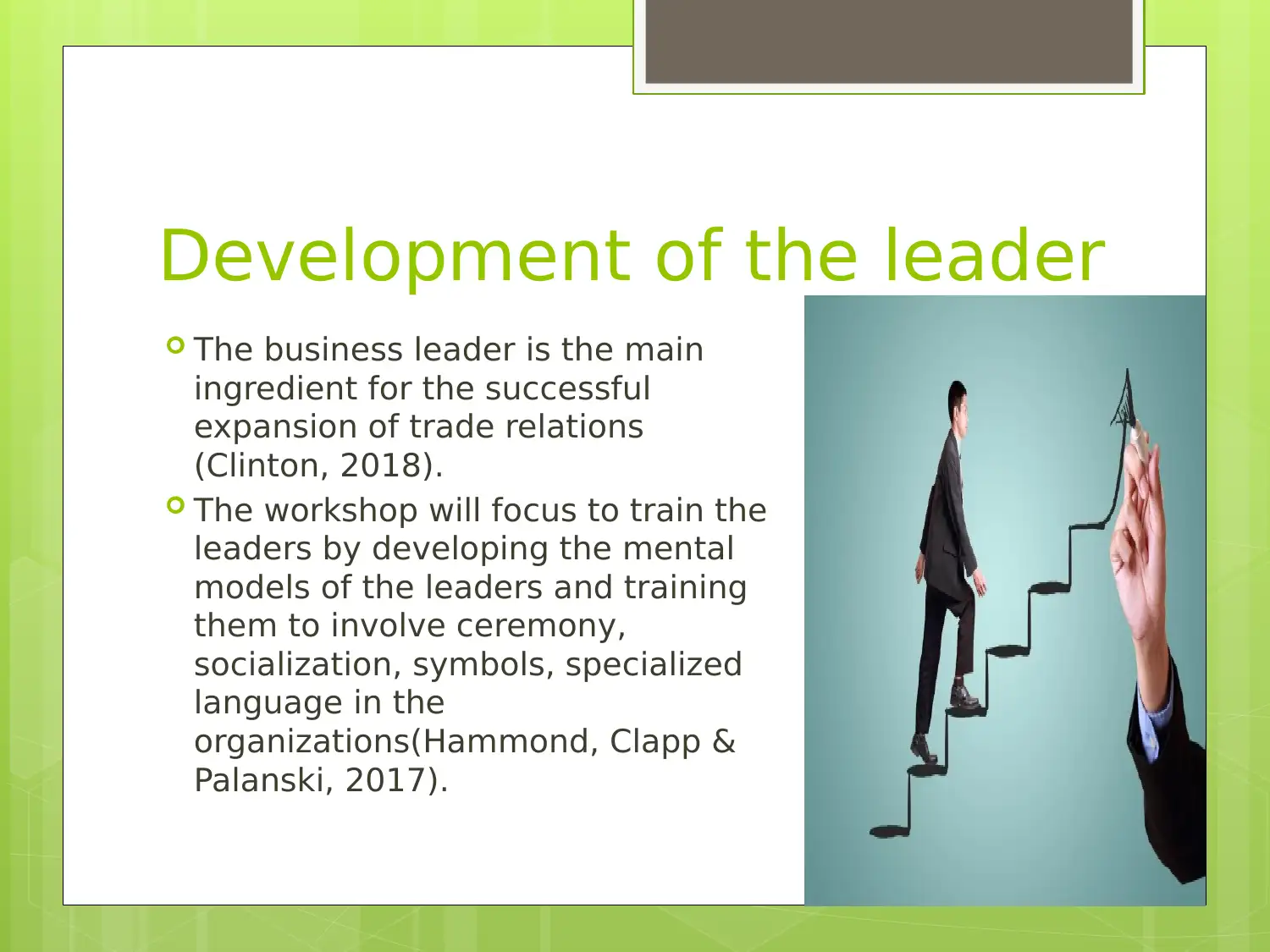
The business leader is the main
ingredient for the successful
expansion of trade relations
(Clinton, 2018).
The workshop will focus to train the
leaders by developing the mental
models of the leaders and training
them to involve ceremony,
socialization, symbols, specialized
language in the
organizations(Hammond, Clapp &
Palanski, 2017).
Paraphrase This Document
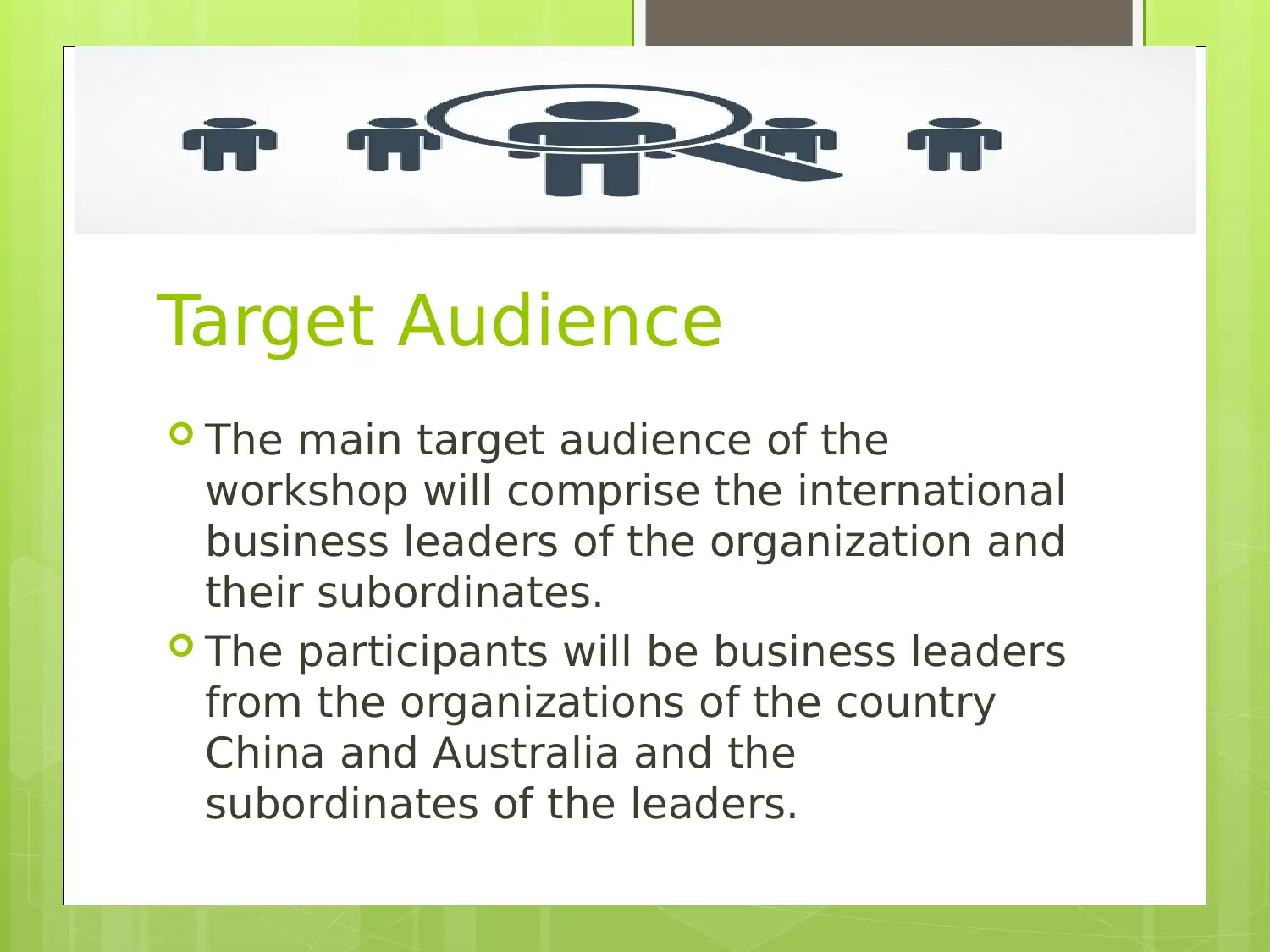
The main target audience of the
workshop will comprise the international
business leaders of the organization and
their subordinates.
The participants will be business leaders
from the organizations of the country
China and Australia and the
subordinates of the leaders.
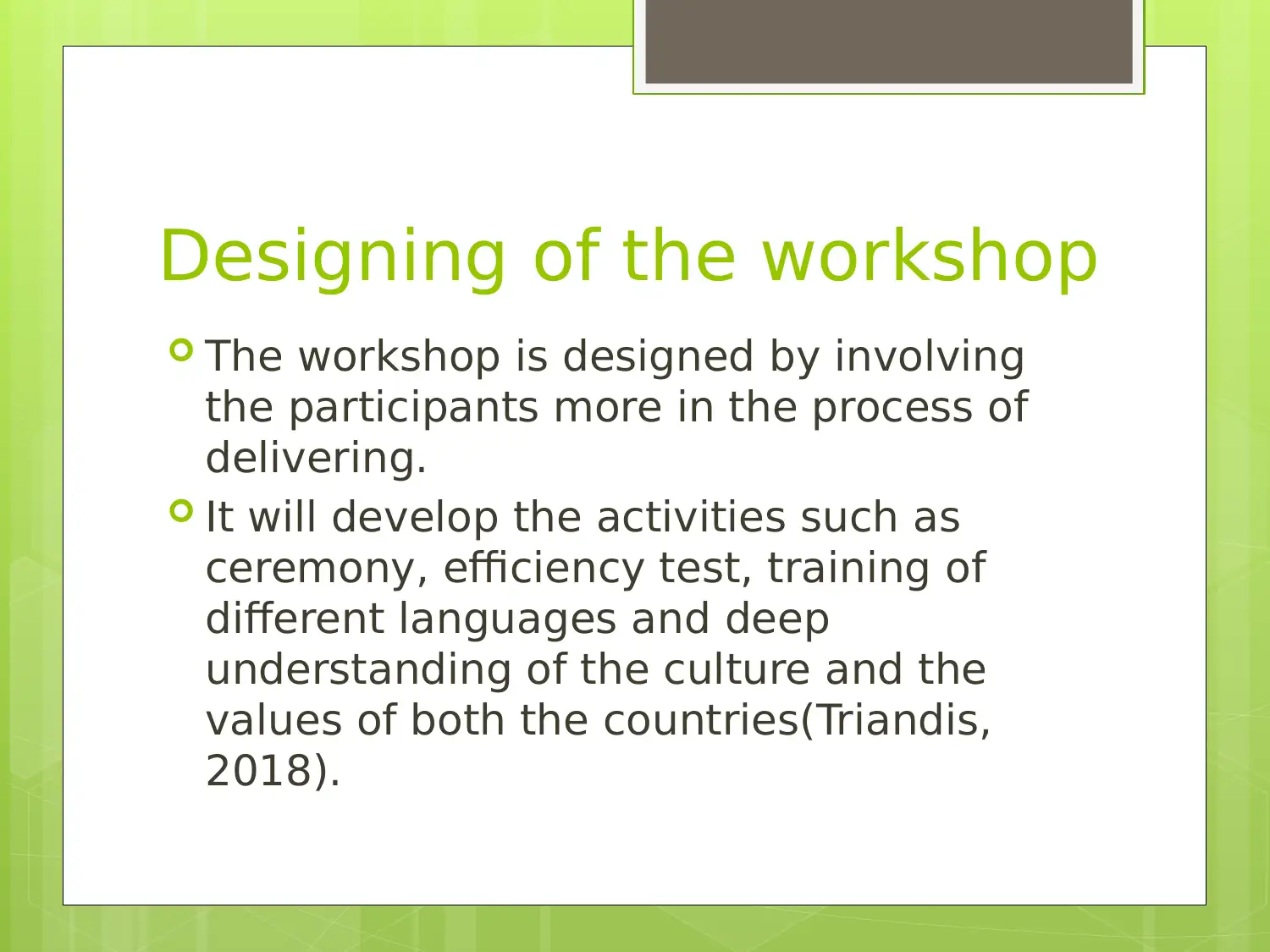
The workshop is designed by involving
the participants more in the process of
delivering.
It will develop the activities such as
ceremony, efficiency test, training of
different languages and deep
understanding of the culture and the
values of both the countries(Triandis,
2018).
⊘ This is a preview!⊘
Do you want full access?
Subscribe today to unlock all pages.

Trusted by 1+ million students worldwide

The potential barriers to the delivery of the
workshop were the absence of the
participants(Hou et al, 2018).
Lack of interest in attempting the self-
assessment test.
Lack of involvement in the activities involved.
Personal attention to all the public involved.
Changes in the perceptions and the
understandings are also the major issue
(Katan, 2015).
Paraphrase This Document
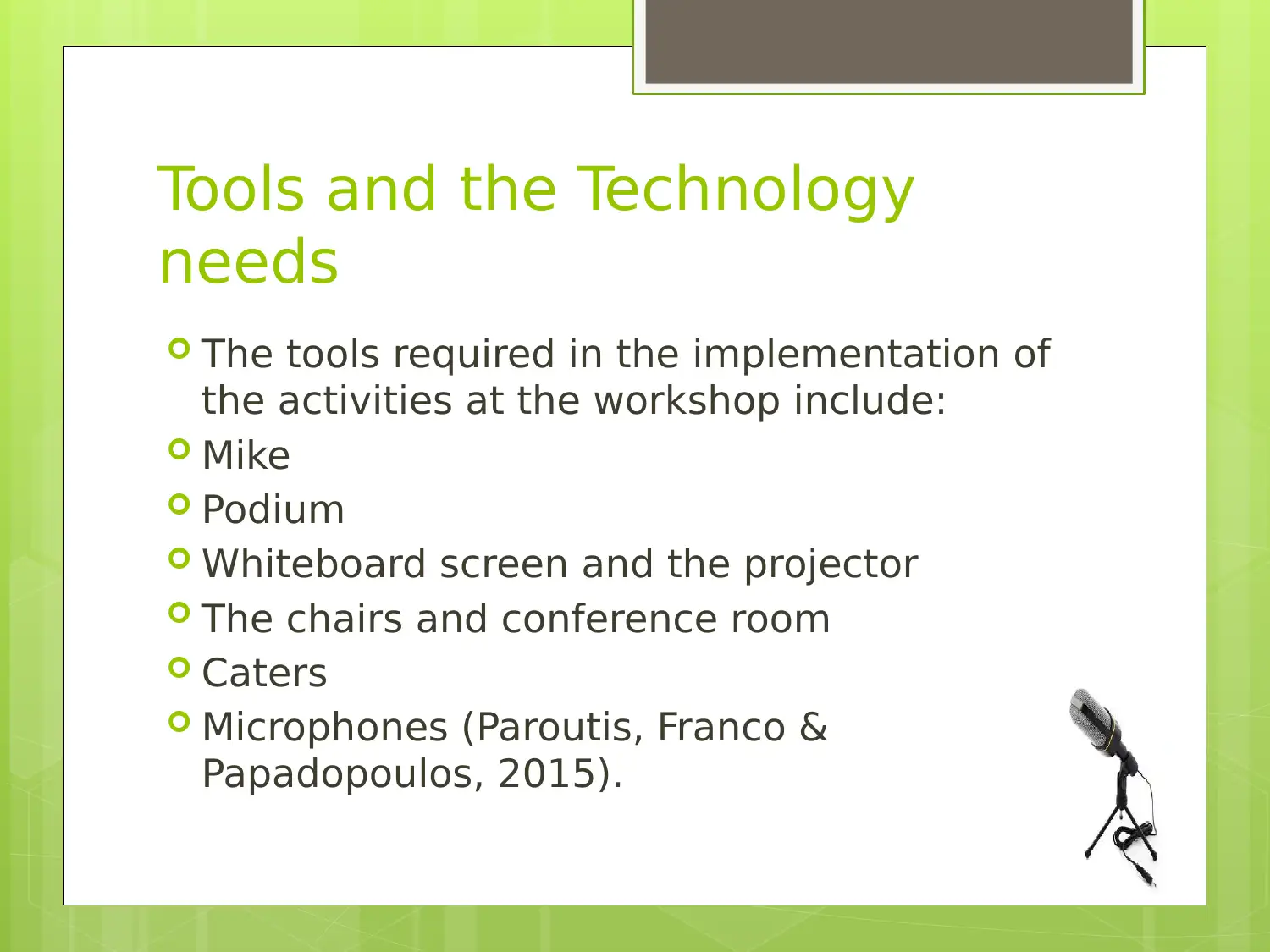
needs
The tools required in the implementation of
the activities at the workshop include:
Mike
Podium
Whiteboard screen and the projector
The chairs and conference room
Caters
Microphones (Paroutis, Franco &
Papadopoulos, 2015).
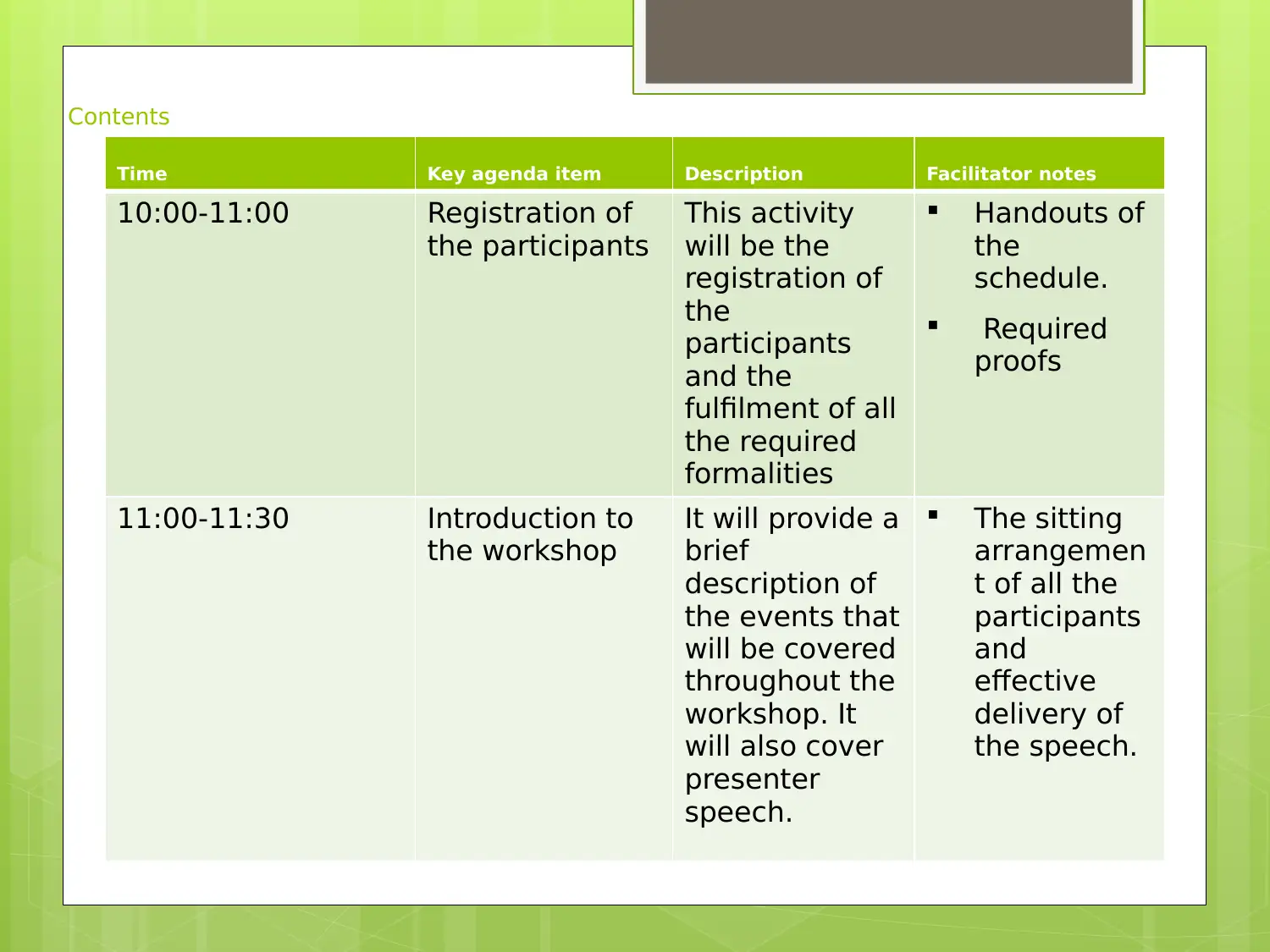
Time Key agenda item Description Facilitator notes
10:00-11:00 Registration of
the participants
This activity
will be the
registration of
the
participants
and the
fulfilment of all
the required
formalities
Handouts of
the
schedule.
Required
proofs
11:00-11:30 Introduction to
the workshop
It will provide a
brief
description of
the events that
will be covered
throughout the
workshop. It
will also cover
presenter
speech.
The sitting
arrangemen
t of all the
participants
and
effective
delivery of
the speech.
⊘ This is a preview!⊘
Do you want full access?
Subscribe today to unlock all pages.

Trusted by 1+ million students worldwide
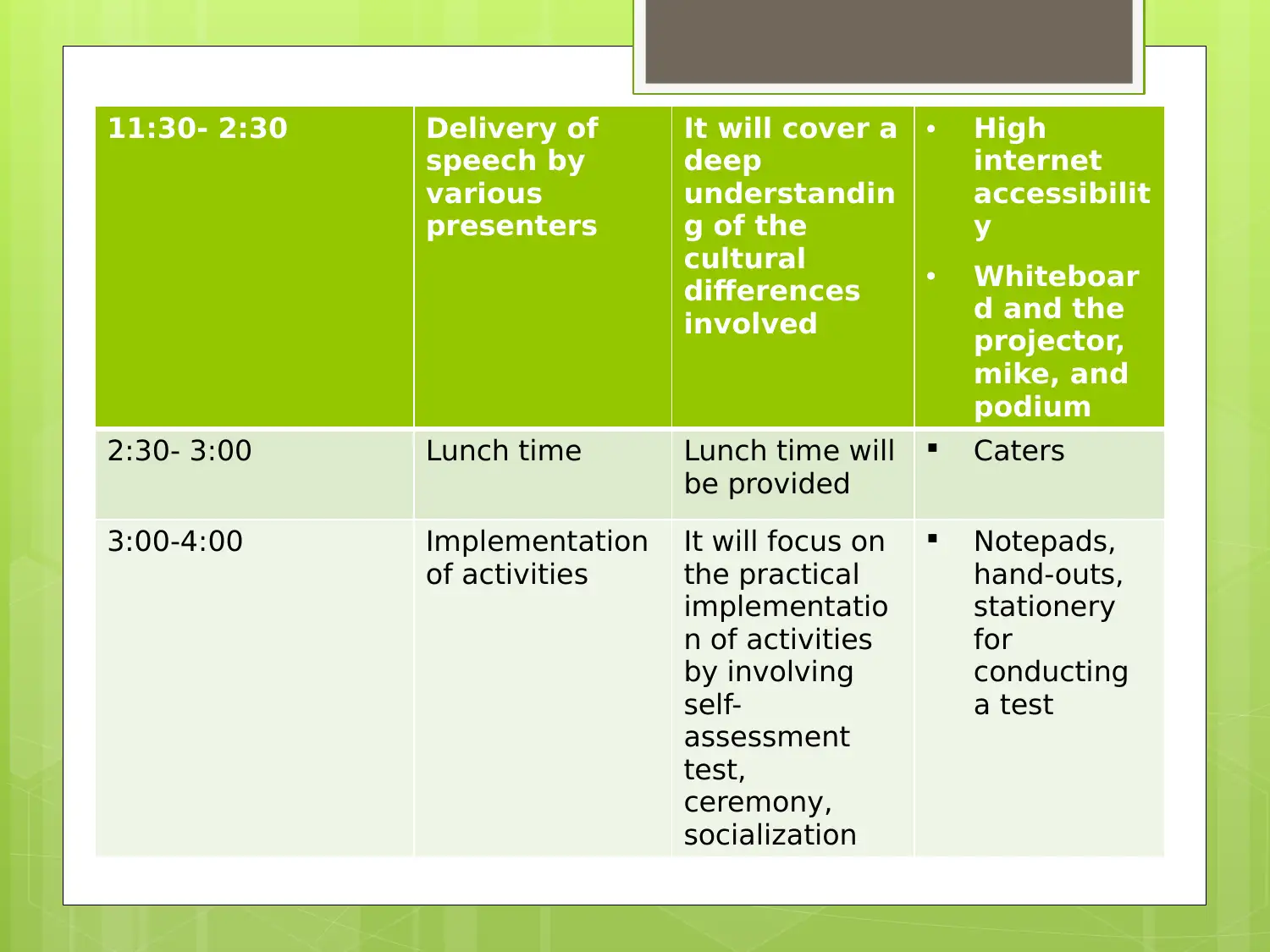
speech by
various
presenters
It will cover a
deep
understandin
g of the
cultural
differences
involved
• High
internet
accessibilit
y
• Whiteboar
d and the
projector,
mike, and
podium
2:30- 3:00 Lunch time Lunch time will
be provided
Caters
3:00-4:00 Implementation
of activities
It will focus on
the practical
implementatio
n of activities
by involving
self-
assessment
test,
ceremony,
socialization
Notepads,
hand-outs,
stationery
for
conducting
a test
Paraphrase This Document
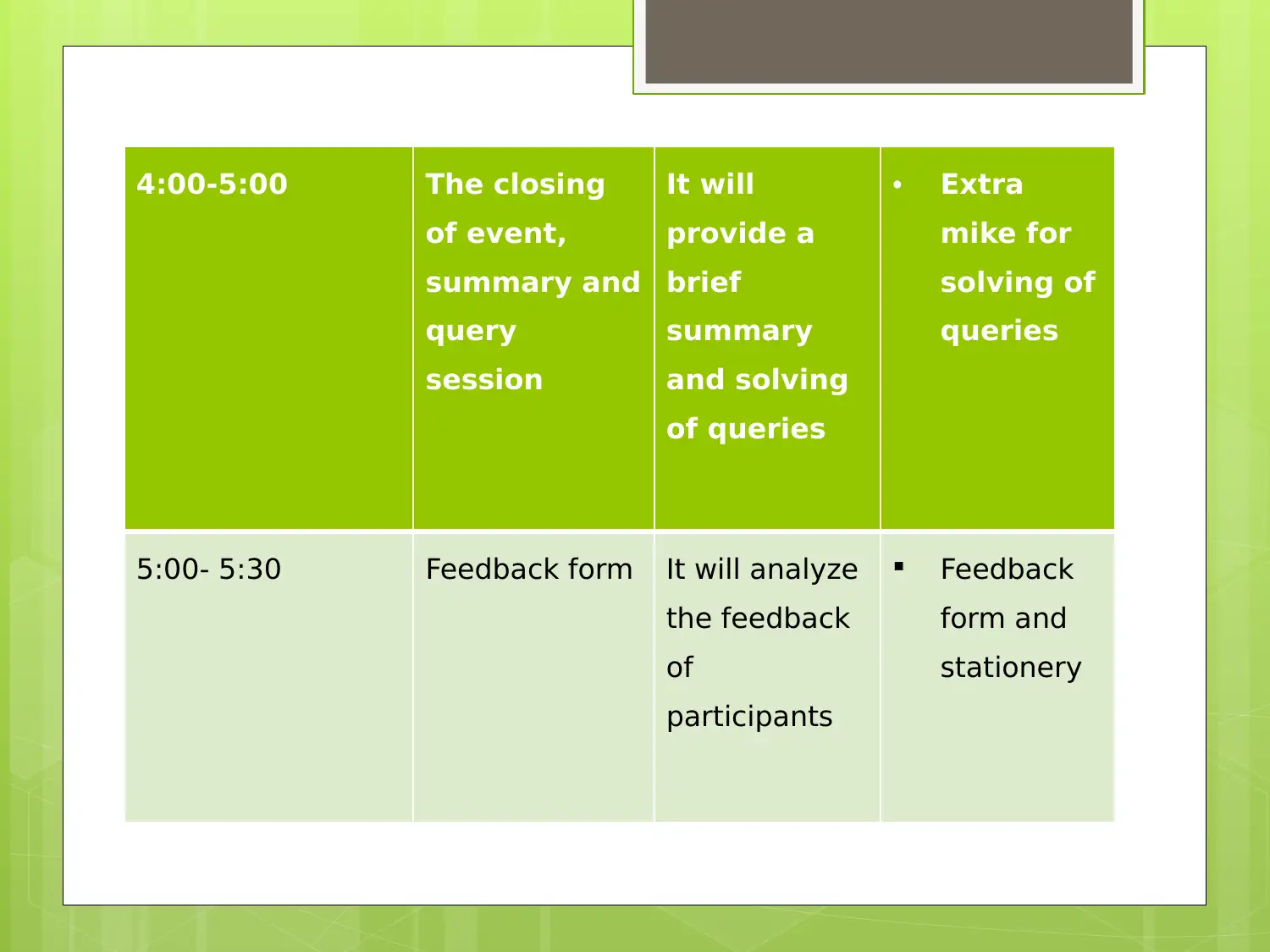
of event,
summary and
query
session
It will
provide a
brief
summary
and solving
of queries
• Extra
mike for
solving of
queries
5:00- 5:30 Feedback form It will analyze
the feedback
of
participants
Feedback
form and
stationery
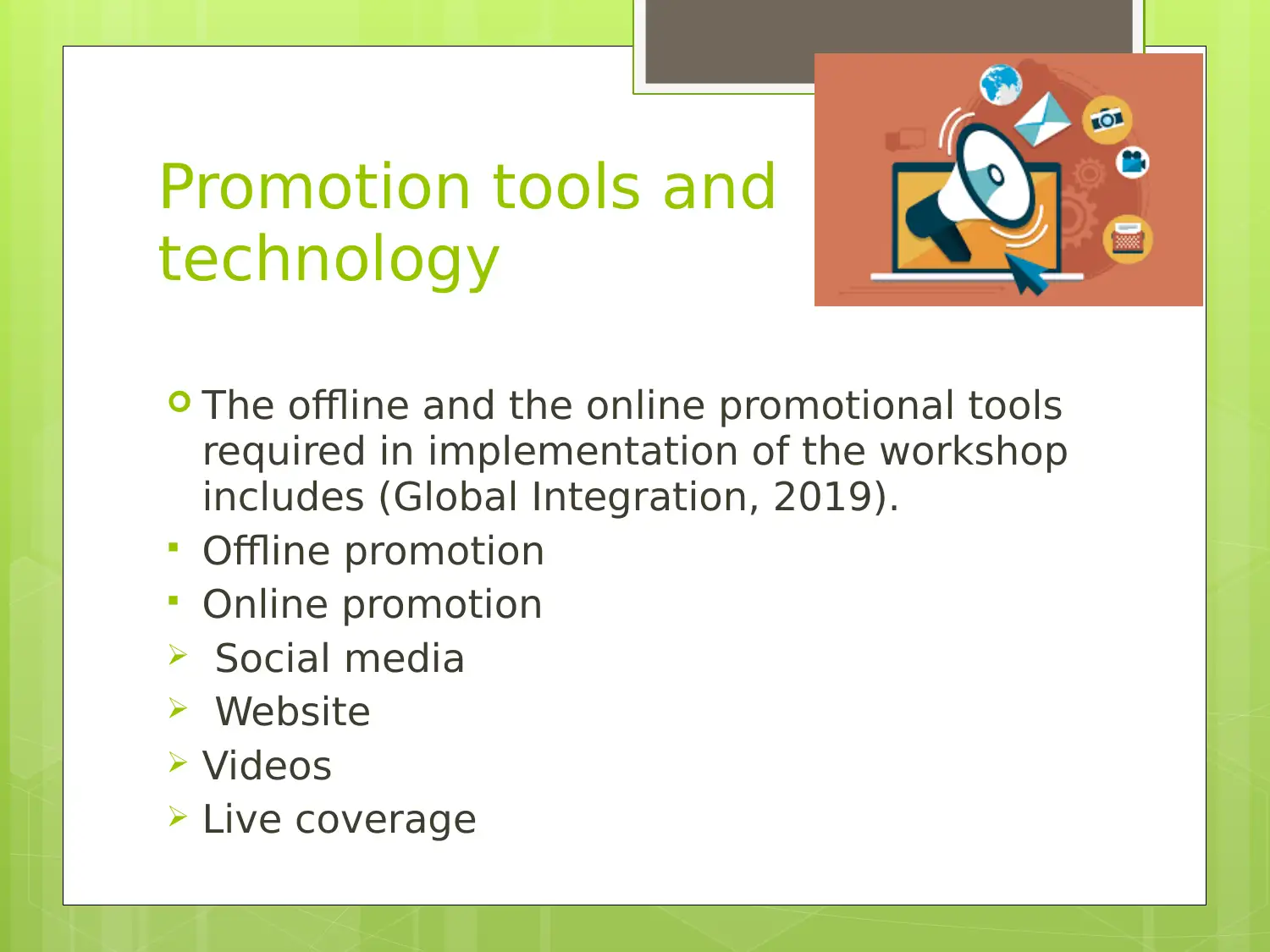
technology
The offline and the online promotional tools
required in implementation of the workshop
includes (Global Integration, 2019).
Offline promotion
Online promotion
Social media
Website
Videos
Live coverage
⊘ This is a preview!⊘
Do you want full access?
Subscribe today to unlock all pages.

Trusted by 1+ million students worldwide
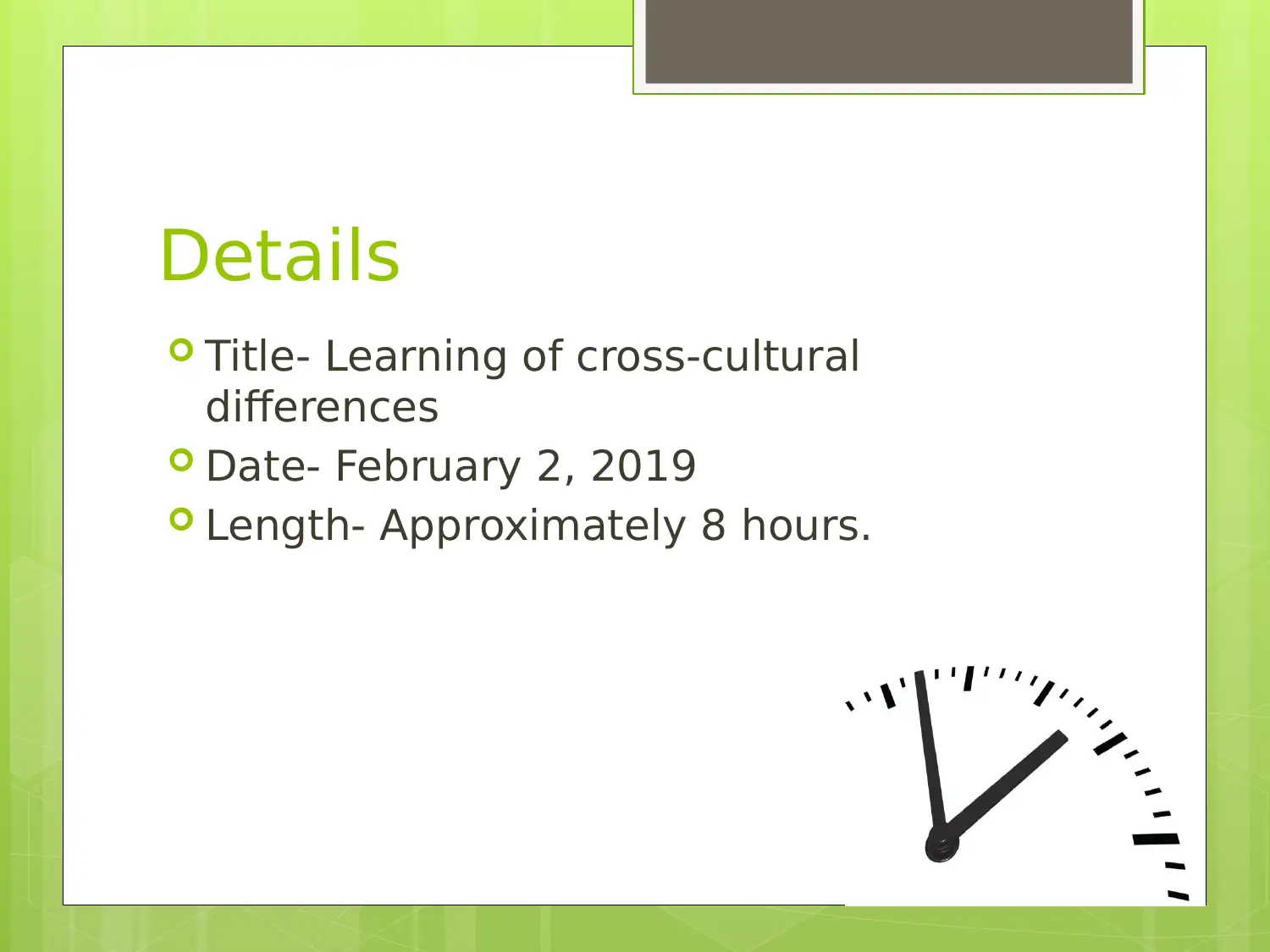
Title- Learning of cross-cultural
differences
Date- February 2, 2019
Length- Approximately 8 hours.
Paraphrase This Document
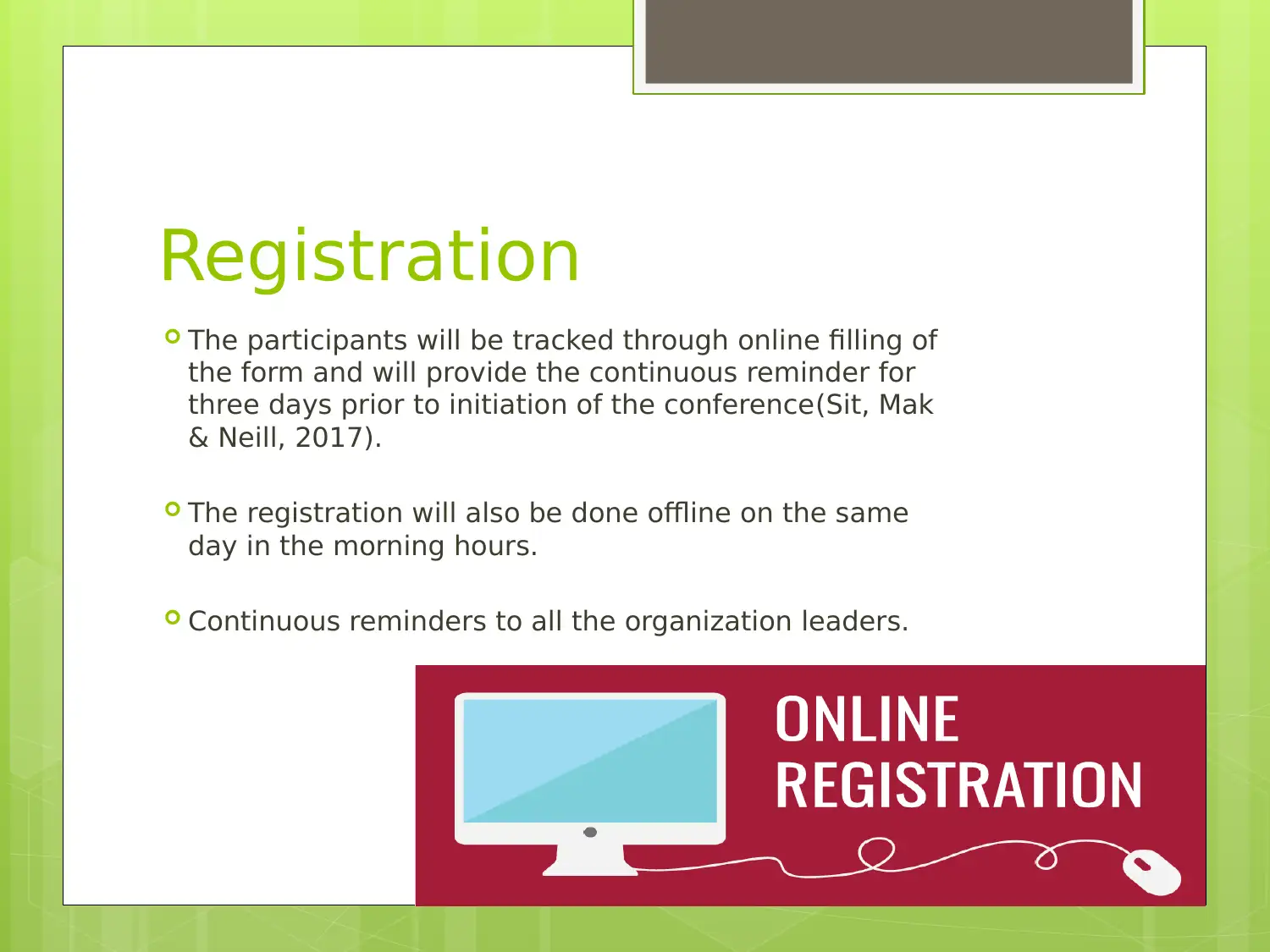
The participants will be tracked through online filling of
the form and will provide the continuous reminder for
three days prior to initiation of the conference(Sit, Mak
& Neill, 2017).
The registration will also be done offline on the same
day in the morning hours.
Continuous reminders to all the organization leaders.
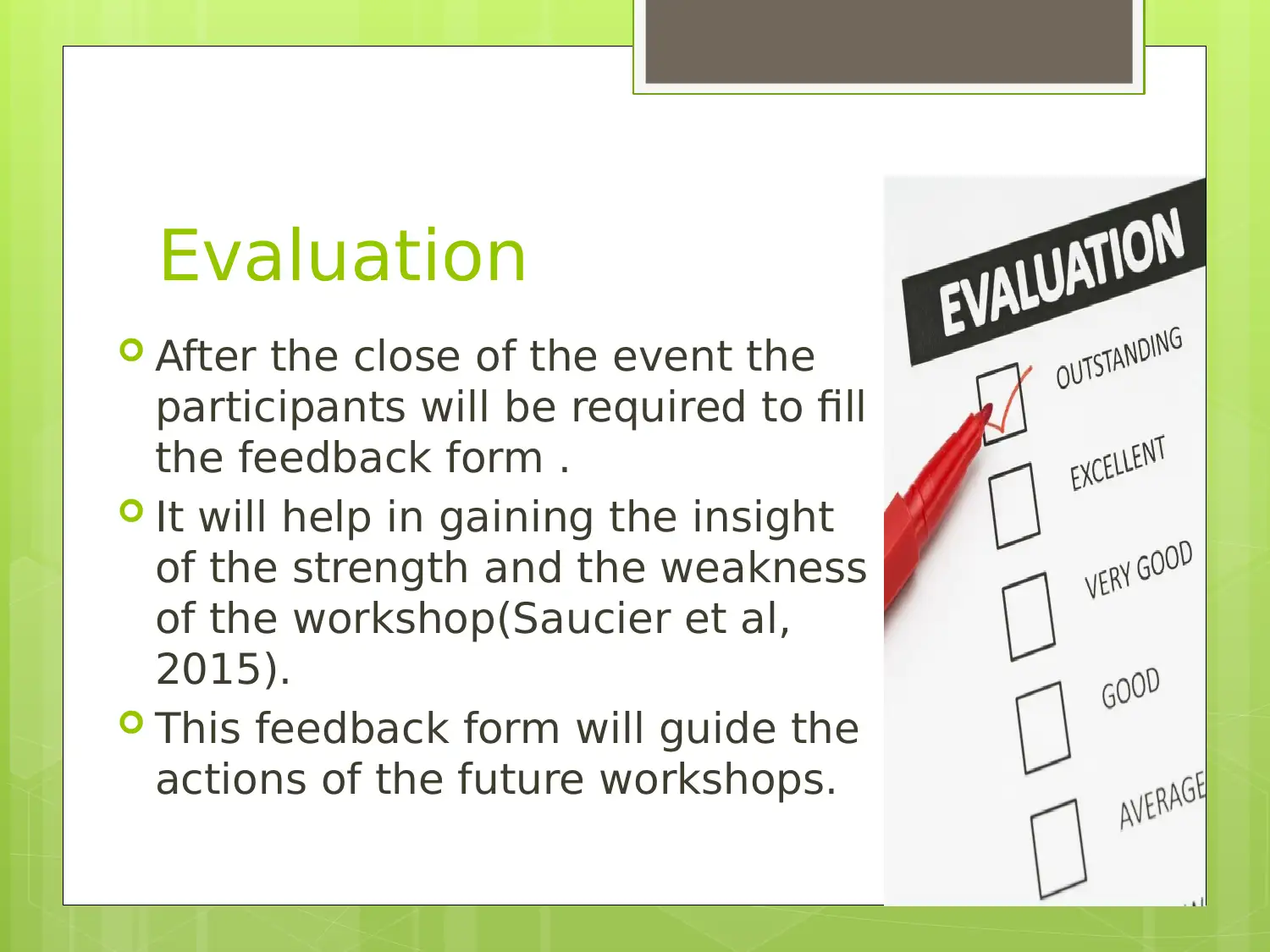
After the close of the event the
participants will be required to fill
the feedback form .
It will help in gaining the insight
of the strength and the weakness
of the workshop(Saucier et al,
2015).
This feedback form will guide the
actions of the future workshops.
⊘ This is a preview!⊘
Do you want full access?
Subscribe today to unlock all pages.

Trusted by 1+ million students worldwide

This is the last part of the workshop
where the reaction of the target
audience will be covered.
The reaction will be covered by
recording videos of the audience and
analysing the learning's they have
received from the workshop(Riversdown
House, 2019).
Paraphrase This Document
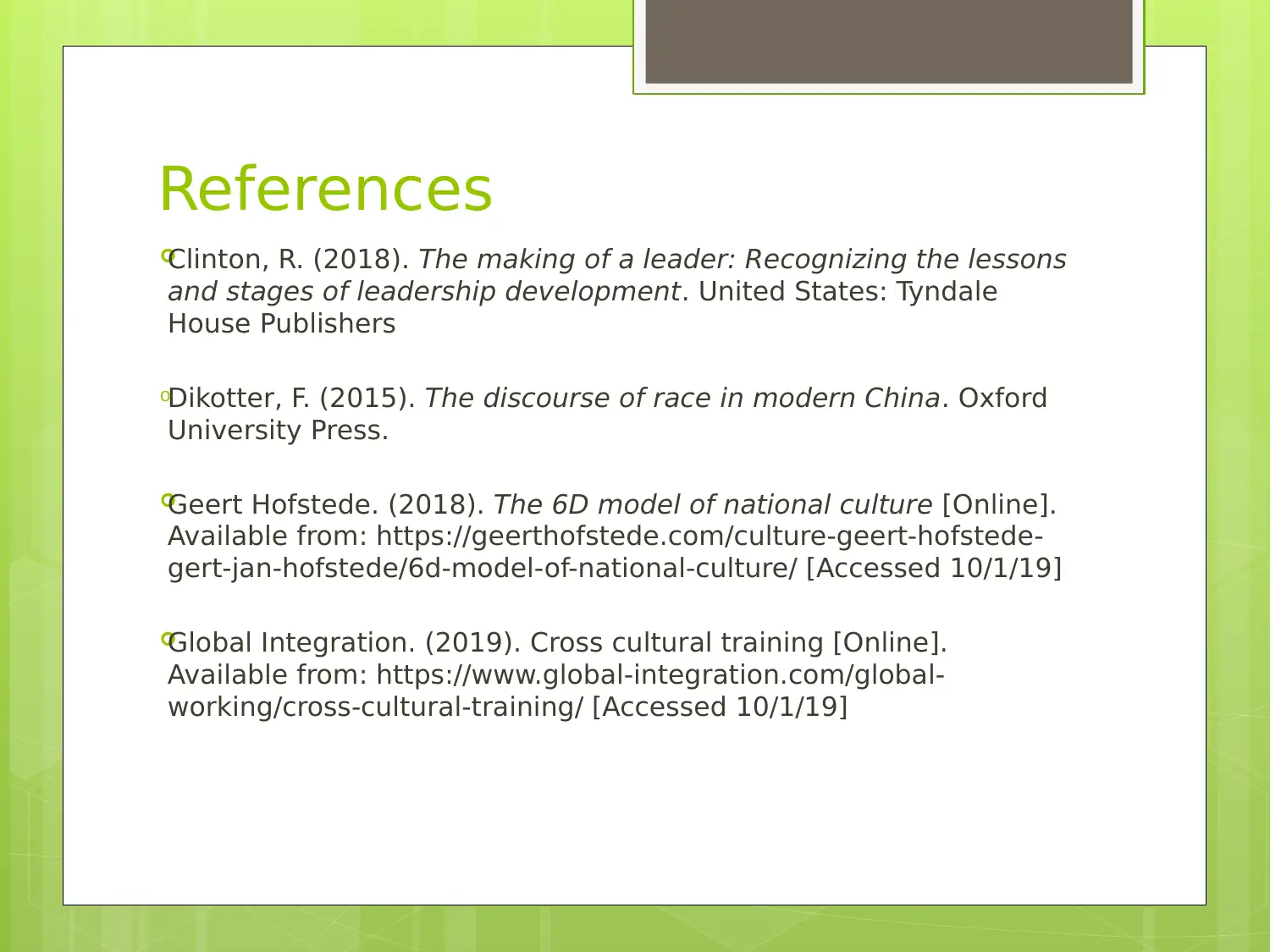
Clinton, R. (2018). The making of a leader: Recognizing the lessons
and stages of leadership development. United States: Tyndale
House Publishers
oDikotter, F. (2015). The discourse of race in modern China. Oxford
University Press.
Geert Hofstede. (2018). The 6D model of national culture [Online].
Available from: https://geerthofstede.com/culture-geert-hofstede-
gert-jan-hofstede/6d-model-of-national-culture/ [Accessed 10/1/19]
Global Integration. (2019). Cross cultural training [Online].
Available from: https://www.global-integration.com/global-
working/cross-cultural-training/ [Accessed 10/1/19]
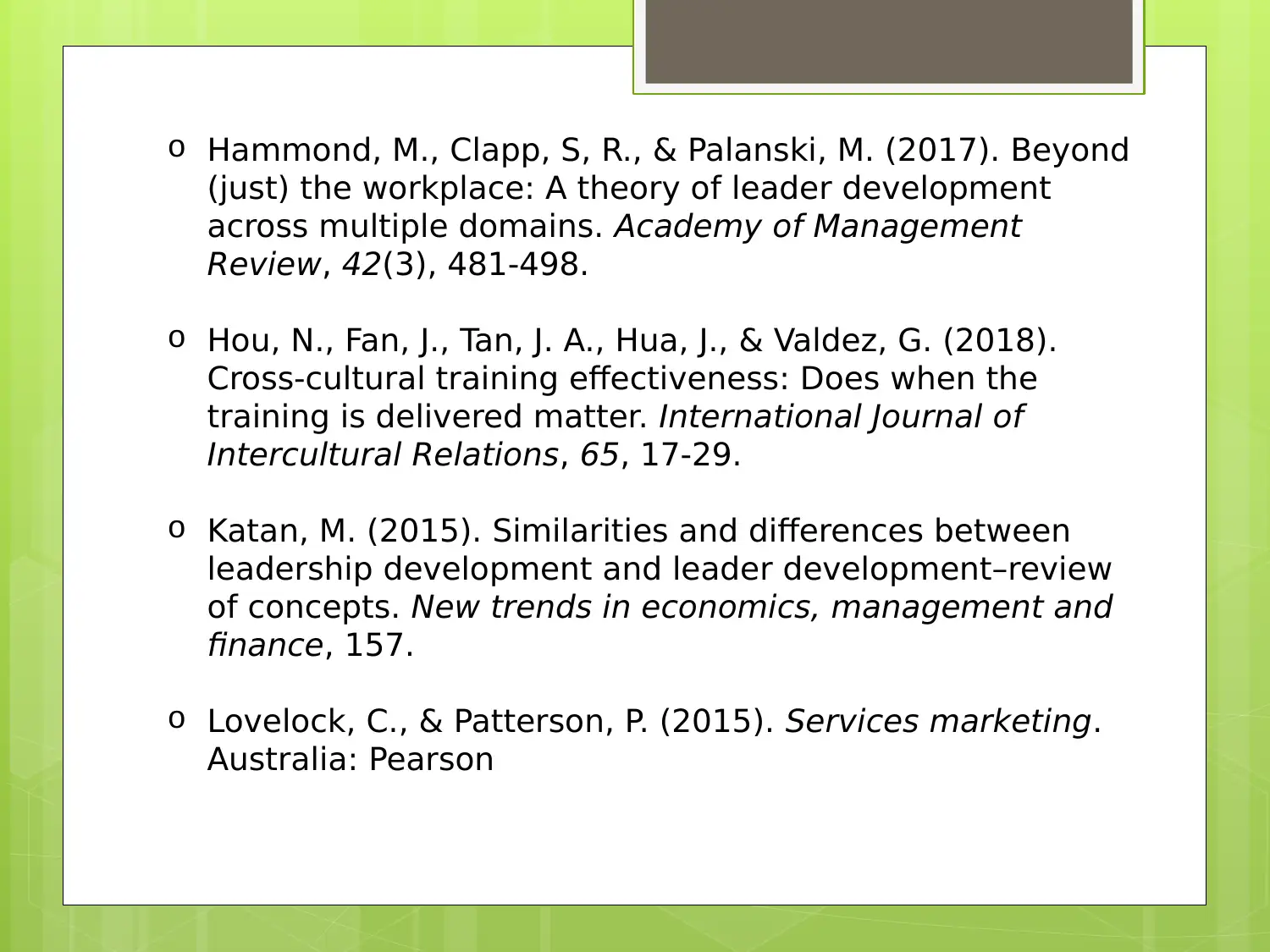
(just) the workplace: A theory of leader development
across multiple domains. Academy of Management
Review, 42(3), 481-498.
o Hou, N., Fan, J., Tan, J. A., Hua, J., & Valdez, G. (2018).
Cross-cultural training effectiveness: Does when the
training is delivered matter. International Journal of
Intercultural Relations, 65, 17-29.
o Katan, M. (2015). Similarities and differences between
leadership development and leader development–review
of concepts. New trends in economics, management and
finance, 157.
o Lovelock, C., & Patterson, P. (2015). Services marketing.
Australia: Pearson
⊘ This is a preview!⊘
Do you want full access?
Subscribe today to unlock all pages.

Trusted by 1+ million students worldwide
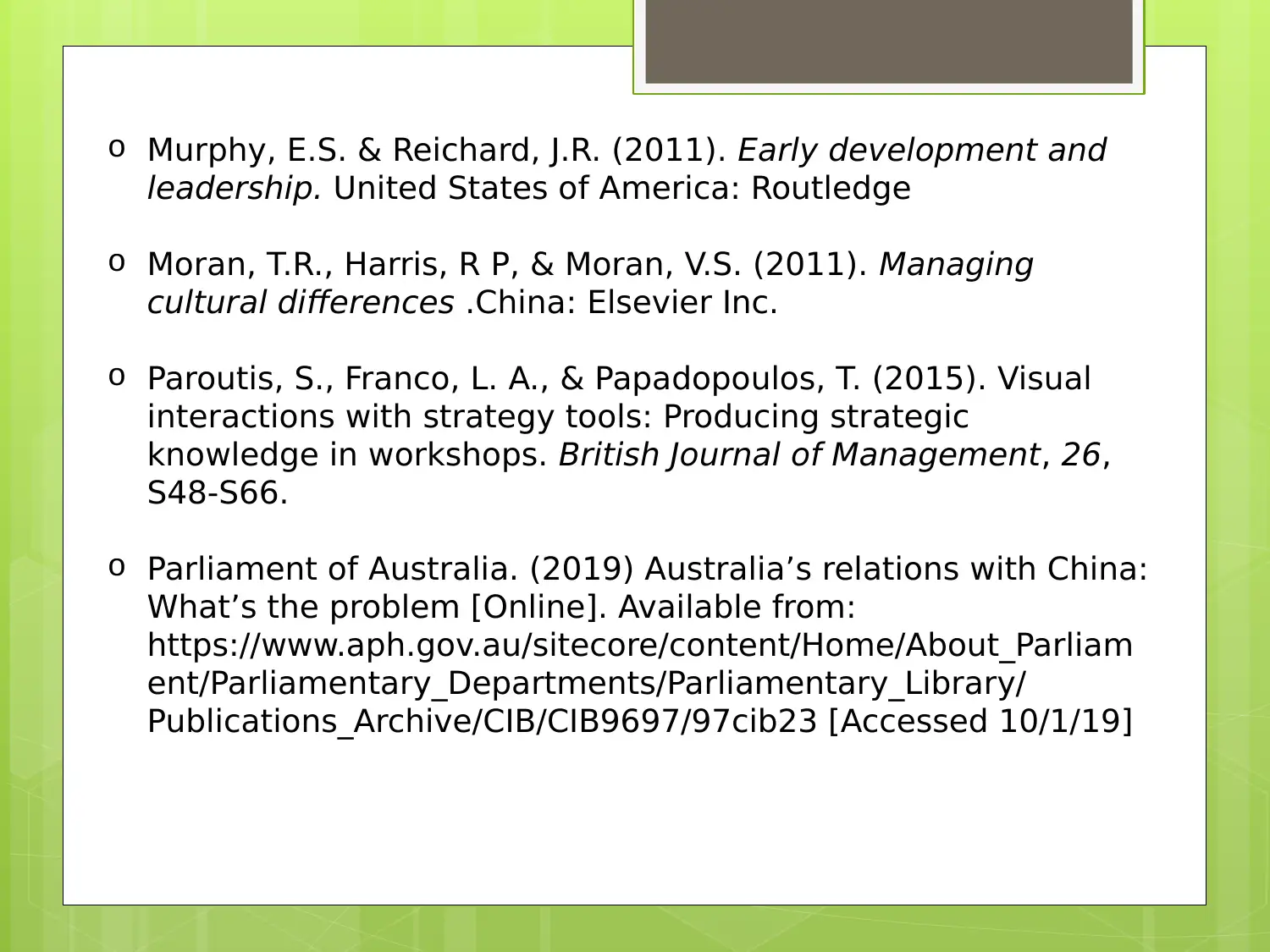
leadership. United States of America: Routledge
o Moran, T.R., Harris, R P, & Moran, V.S. (2011). Managing
cultural differences .China: Elsevier Inc.
o Paroutis, S., Franco, L. A., & Papadopoulos, T. (2015). Visual
interactions with strategy tools: Producing strategic
knowledge in workshops. British Journal of Management, 26,
S48-S66.
o Parliament of Australia. (2019) Australia’s relations with China:
What’s the problem [Online]. Available from:
https://www.aph.gov.au/sitecore/content/Home/About_Parliam
ent/Parliamentary_Departments/Parliamentary_Library/
Publications_Archive/CIB/CIB9697/97cib23 [Accessed 10/1/19]
Paraphrase This Document
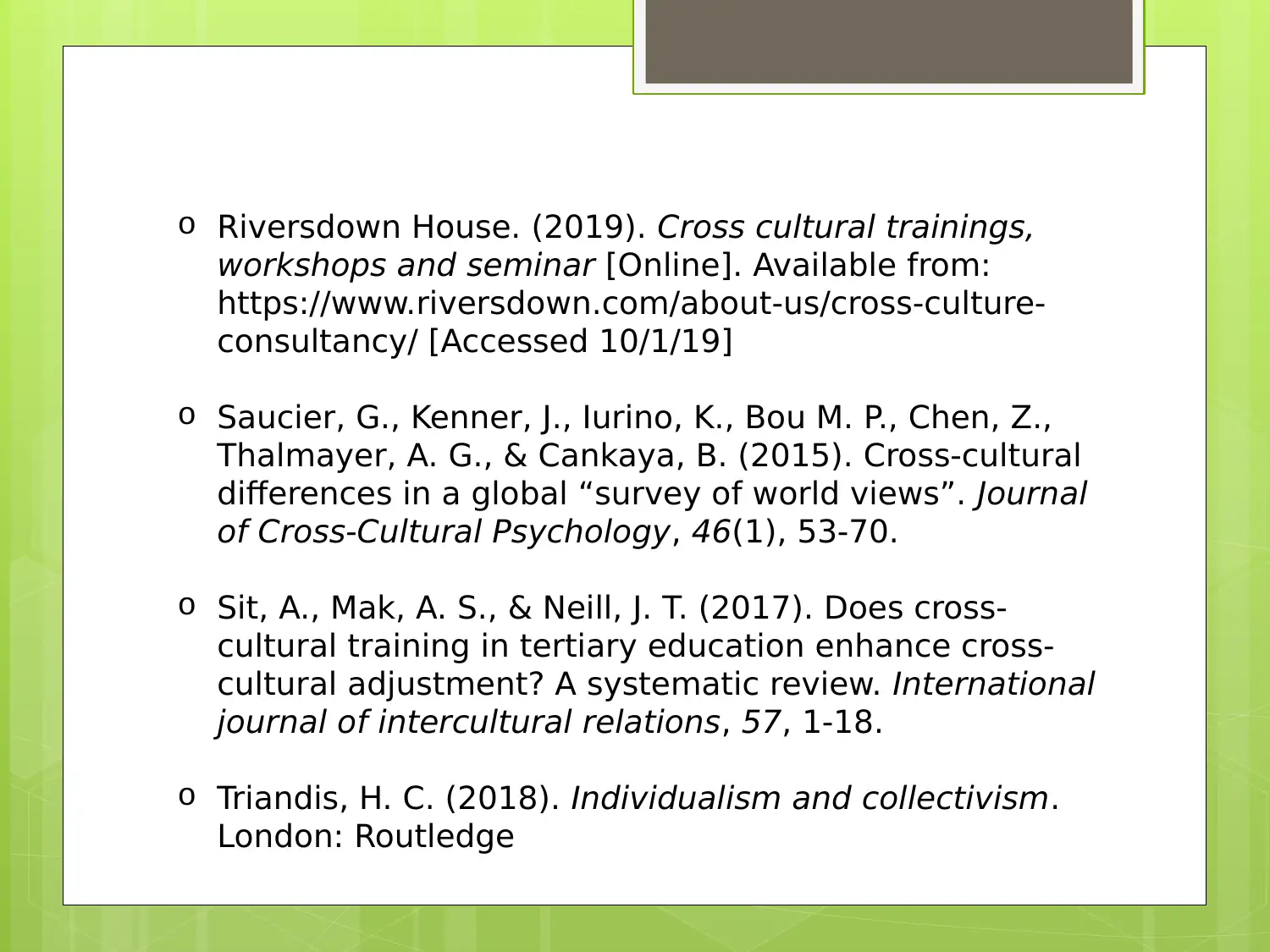
workshops and seminar [Online]. Available from:
https://www.riversdown.com/about-us/cross-culture-
consultancy/ [Accessed 10/1/19]
o Saucier, G., Kenner, J., Iurino, K., Bou M. P., Chen, Z.,
Thalmayer, A. G., & Cankaya, B. (2015). Cross-cultural
differences in a global “survey of world views”. Journal
of Cross-Cultural Psychology, 46(1), 53-70.
o Sit, A., Mak, A. S., & Neill, J. T. (2017). Does cross-
cultural training in tertiary education enhance cross-
cultural adjustment? A systematic review. International
journal of intercultural relations, 57, 1-18.
o Triandis, H. C. (2018). Individualism and collectivism.
London: Routledge
Related Documents
Your All-in-One AI-Powered Toolkit for Academic Success.
+13062052269
info@desklib.com
Available 24*7 on WhatsApp / Email
![[object Object]](/_next/static/media/star-bottom.7253800d.svg)
© 2024 | Zucol Services PVT LTD | All rights reserved.





